Expressionism was a prominent art movement that emerged in the early 20th century. It focused on conveying intense emotions and exploring the human psyche through bold and distorted representations. Expressionist artists rejected traditional forms and instead sought to express their inner world through their work. In this article, we will delve into details about famous paintings of the Expressionism art movement, offering insights into the lives and creative processes of the artists who embraced this revolutionary style.
What type of art was created during the Expressionist movement?
Painting, photography, installation art, poetry and even films were made in the Expressionist art movement.
Expressionist Art was created and popular during which years?
Expressionism began around the year 1905 and gained popularity a few years later in the 1910s.
Where was Expressionist Art made and popularised?
Expressionism began in Germany by a group of artists who formed a group called “Die Brücke” or The Bridge. Later the movement spread across Europe and even America.
What medium (media) and tools were used to make Expressionist Artwork?
Oil on canvas, photography, literature or any material that would make the subject look as expressive as possible.
Who are some famous Expressionist artists and artworks?
The Scream by Edvard Munch
Deer in the Woods by Franz Marc
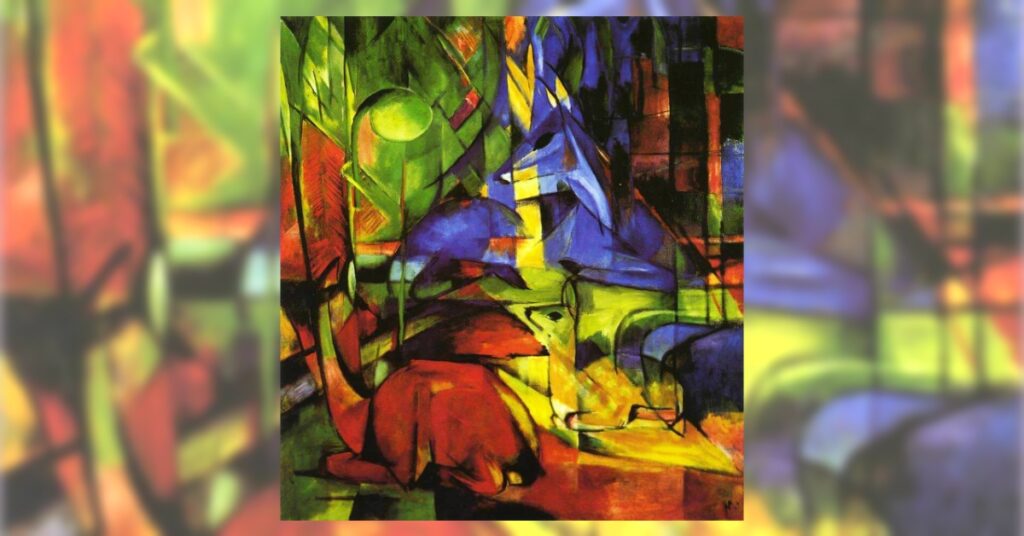
Blind Musician by Alvar Cawén
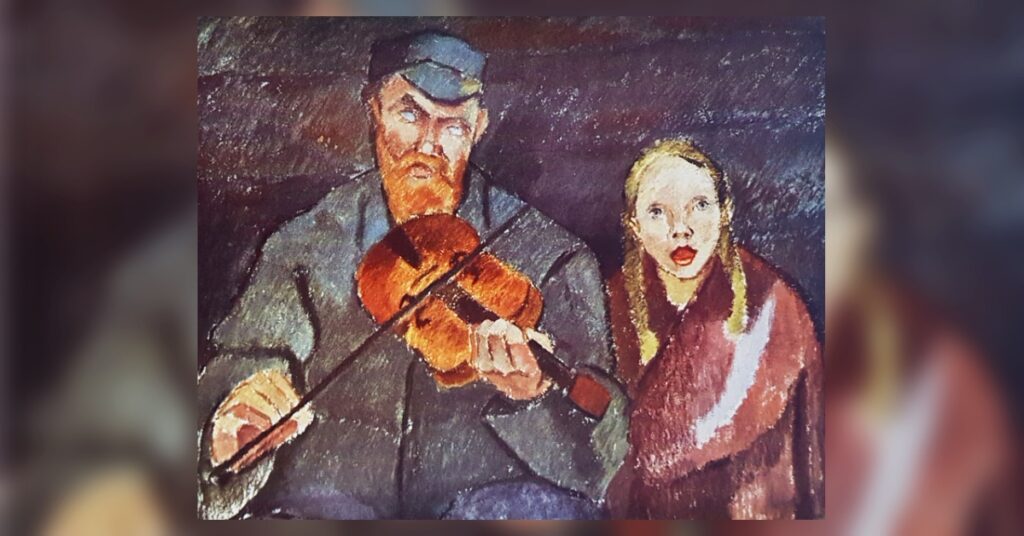
Which art movement(s) came before the Expressionism movement?
Experimental and avante-garde artworks, in some way, have been the inspiration for many expressionist pieces. Movements like Impressionism and the Modern art movement, paved the way for the Expressionist art movement.
Which art movement(s) came after the Expressionism movement?
Abstract Expressionism came after the Expressionist movement.
Top 8 Artworks of the Expressionism Art Movement
The Scream by Edvard Munch
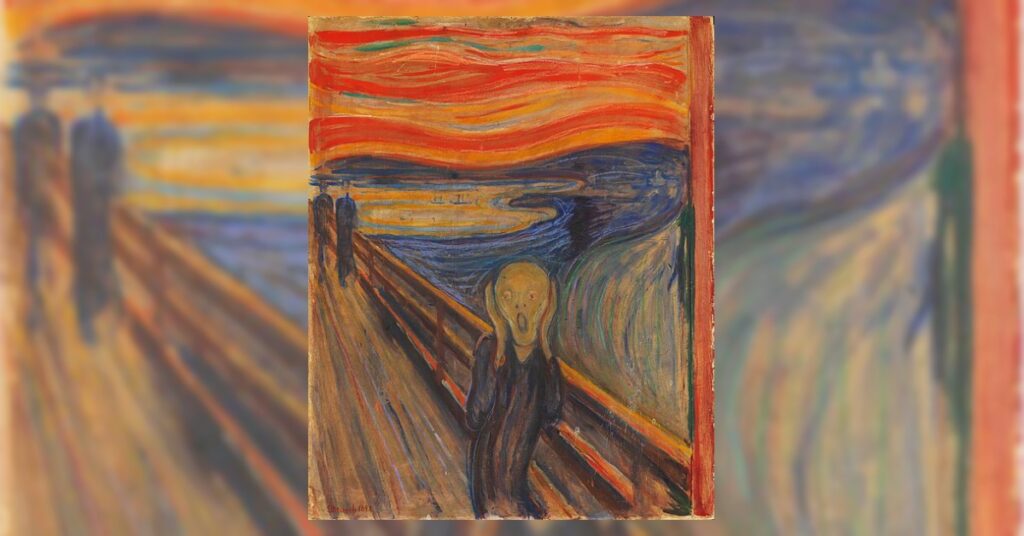
Edvard Munch’s “The Scream” (1893) is one of the most iconic Expressionist paintings. The artwork depicts a figure standing on a bridge against a tumultuous sky, its face twisted in agony.
Munch’s “The Scream” is a reflection of his struggles with anxiety and existential dread. The inspiration for the painting came during a walk he took with friends, during which he experienced an overwhelming sense of despair and isolation. Munch’s ability to capture profound emotions and convey them through bold and distorted imagery makes this painting a quintessential expressionist work.
Self-Portrait with Cropped Hair by Frida Kahlo

Frida Kahlo’s “Self-Portrait with Cropped Hair” (1940) is an expressionist self-portrait that reflects the artist’s unapologetic and rebellious spirit. The artwork features Kahlo with cropped hair and wearing a suit, with locks of her hair all over the floor.
Kahlo’s art was deeply personal and often explored themes of identity and self-discovery. “Self-Portrait with Cropped Hair” was a reflection of her defiance and determination to express her true self. The painting serves as a powerful statement of identity and resistance.
The Bridge by Ernst Ludwig Kirchner
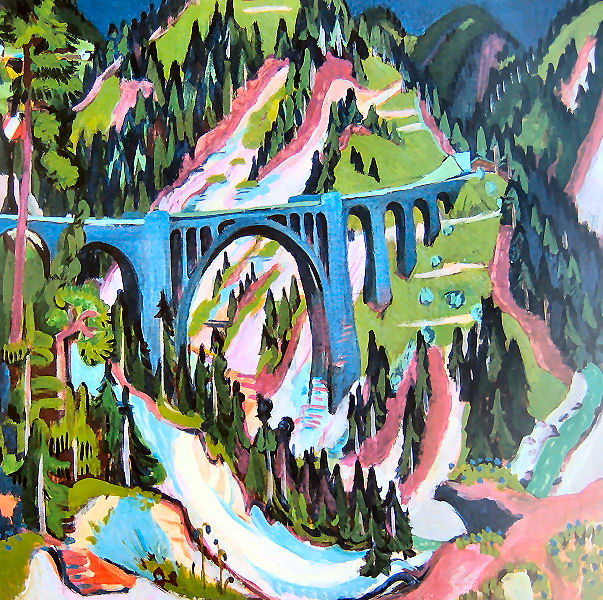
Ernst Ludwig Kirchner’s “The Bridge” (1910) is an artwork that is named after the group that started the expressionist movement. Incidentally, Kirchner was a part of that group and hence one of the founding members of the Expressionist art movement.
Obviously, a member of the “Die Brücke” will create artwork that is quintessential to the Expressionist movement. The intensity of the bridge, the pine trees and the whole scenery is so vivid that it is almost as expressive as an Oscar-nominated actor.
The Last Supper by Egon Schiele
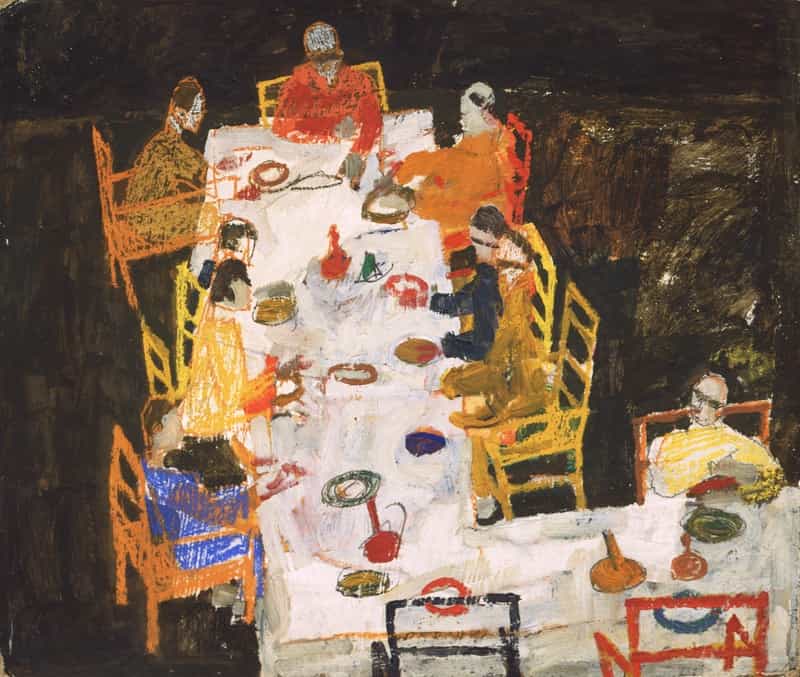
Egon Schiele’s “The Last Supper” (1910) is a deliberate and expressionist reinterpretation of the biblical scene. The artwork features Christ and his disciples in a distorted and emotionally charged composition.
Schiele’s art often pushed boundaries and challenged conventions. “The Last Supper” is a striking example of his exploration of religious and spiritual themes through an expressionist lens. The “L-shape” table has all disciples sitting at the verticle end with only one apostle sitting alone at the horizontal end. No prizes for guessing it is Judas.
Composition VII by Wassily Kandinsky

Wassily Kandinsky’s “Composition VII” (1913) is an expressionist masterpiece that represents a departure from traditional representation. The artwork is characterised by its bold colours, abstract forms, and a sense of chaotic movement.
Kandinsky was a pioneer of abstract art and a key figure in the expressionist movement. “Composition VII” is a reflection of his belief in the power of mangled shapes to convey uncomfortable emotions. The painting exemplifies his ability to express profound ideas and feelings through abstraction.
The Dance of Life by Edvard Munch
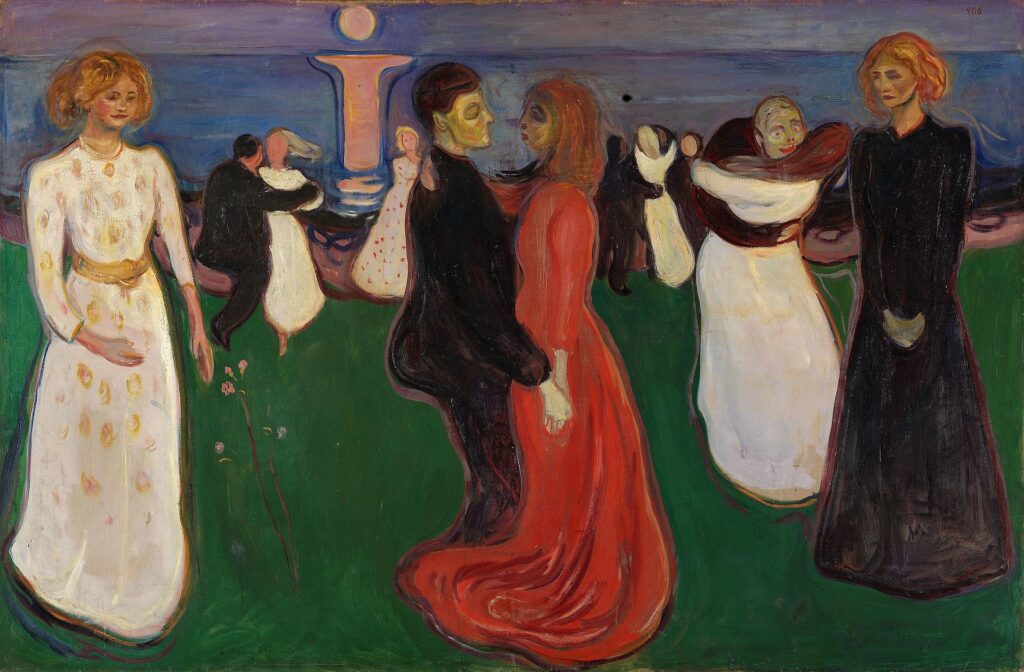
Edvard Munch’s “The Dance of Life” (1899-1900) is another expressionist work that captures the emotional complexity of life. The painting portrays a couple dancing amidst a crowd, with almost haunting staffage characters.
Munch’s fascination with the human experience and the fleeting nature of life is evident in “The Dance of Life.” The painting is part of a series that explores themes of love, anxiety, and death. Munch’s ability to convey uncomfortable moments of human existence is a hallmark of expressionist art.
The Sower by Vincent van Gogh
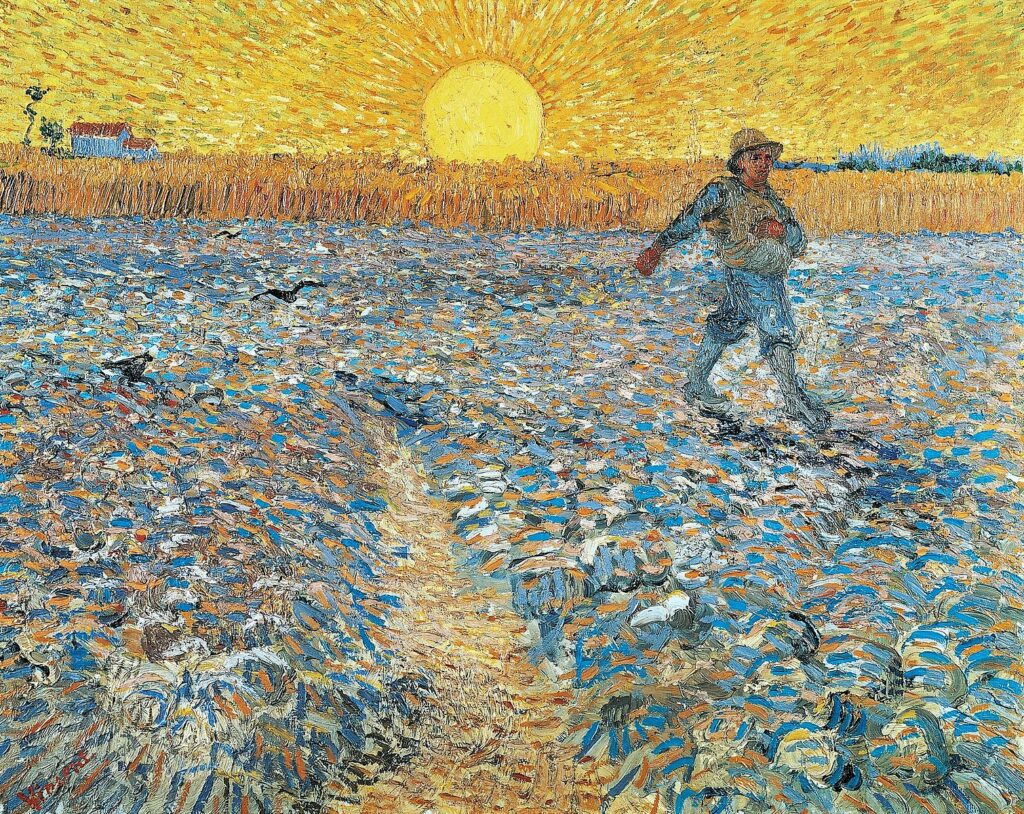
Vincent van Gogh’s “The Sower” (1888) is an expressionist painting that features a solitary figure sowing seeds in a field. The artwork is characterised by bold colours and energetic brushwork.
Van Gogh’s art is often associated with post-impressionism, but “The Sower” reflects his ability to convey deep emotions through his work. The painting captures a sense of determination and purpose through the farmer in the scorching sun, as well as the artist’s own struggles and desires.
Black Lines by Käthe Kollwitz
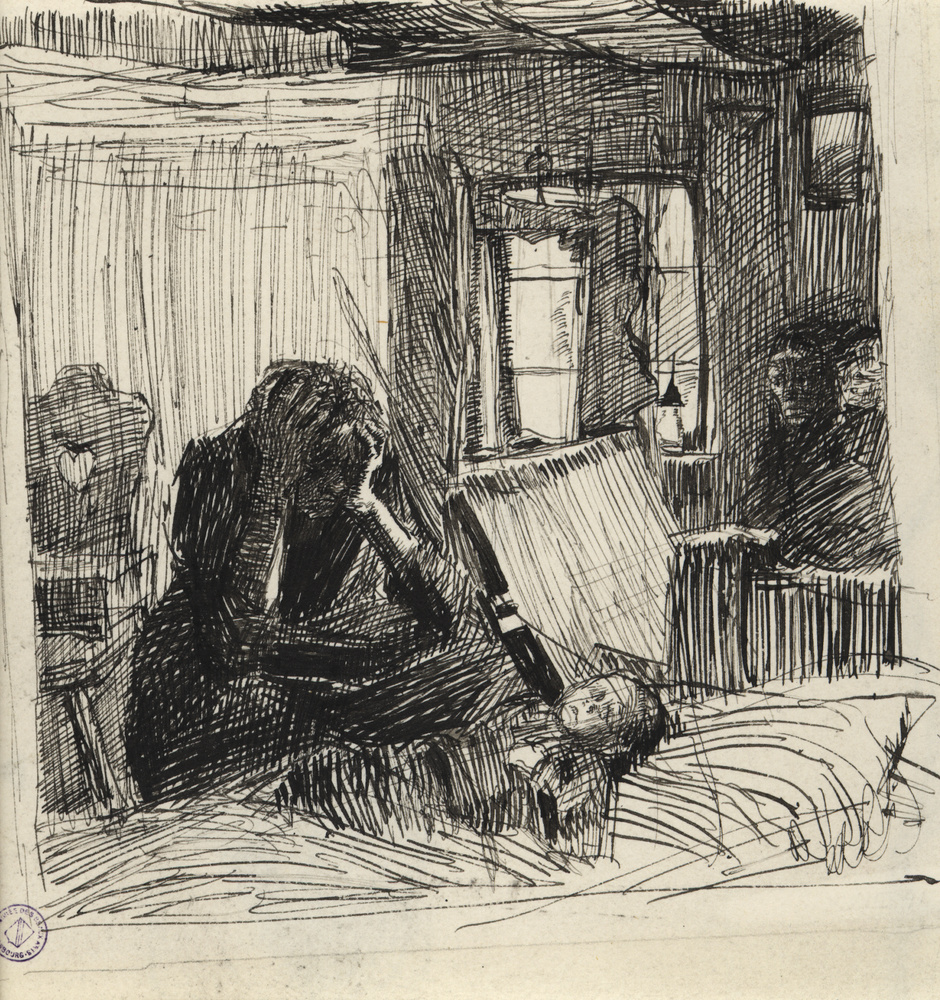
Käthe Kollwitz’s “Black Lines” (1910) is an expressionist drawing that portrays a woman in deep contemplation. The artwork is known for its raw and emotive quality.
Käthe Kollwitz was known for her powerful and emotionally charged art, often exploring themes of suffering and social injustice. “Black Lines” is a piece where the expression of the woman in the painting is conveyed through the angry rigour of the scribbles in the artwork.
Portrait of Dr. Gachet” by Vincent van Gogh
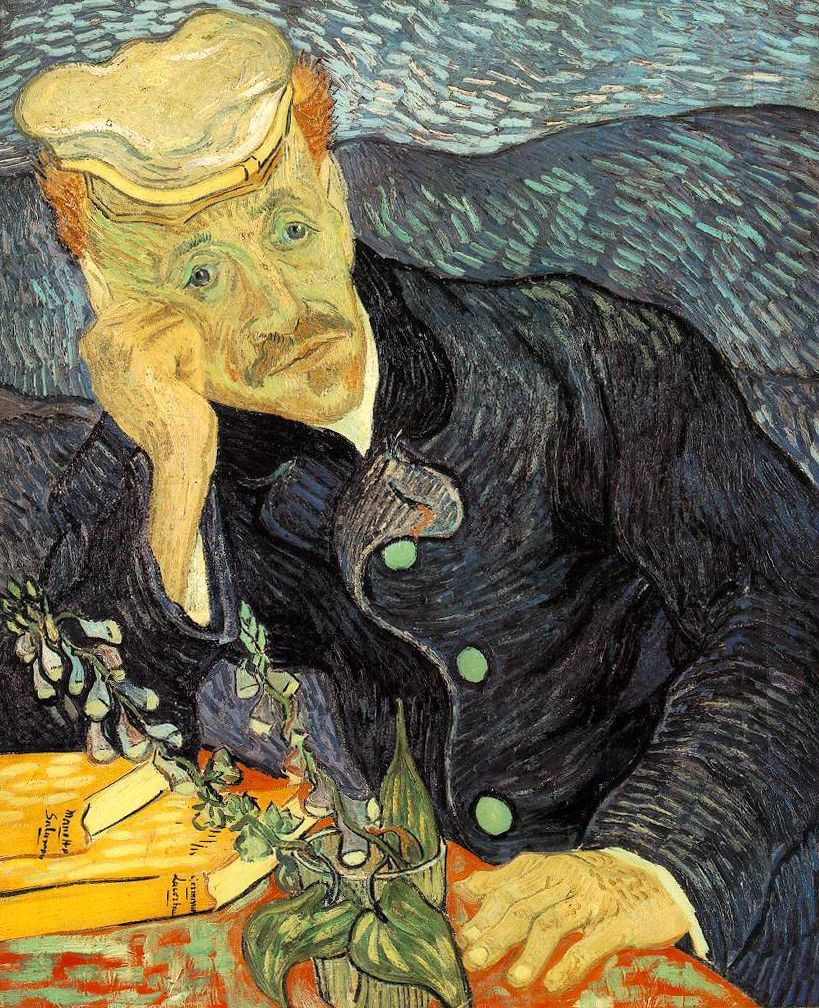
Vincent van Gogh’s “Portrait of Dr. Gachet” (1890) is an expressionist portrait of Dr. Paul Gachet, a physician who treated the artist during his final days. The artwork conveys a sense of melancholy and emotional depth.
Van Gogh’s relationship with Dr. Gachet was marked by the artist’s struggles with mental health. “Portrait of Dr. Gachet” reflects more the sad emotions of the patient Van Gogh than the Doctor who is the actual subject.
The Expressionism art movement was characterised by a raw and emotional approach to art. These stories about famous paintings of the Expressionism movement offer insights into the lives and creative processes of the artists who sought to convey intense emotions and explore the human psyche. From Munch’s exploration of existential dread to Kahlo’s rebellion against gender norms, these works continue to captivate art enthusiasts, serving as testaments to the enduring power and depth of Expressionism in the realm of art.
*Images from Wiki Commons







0 Comments